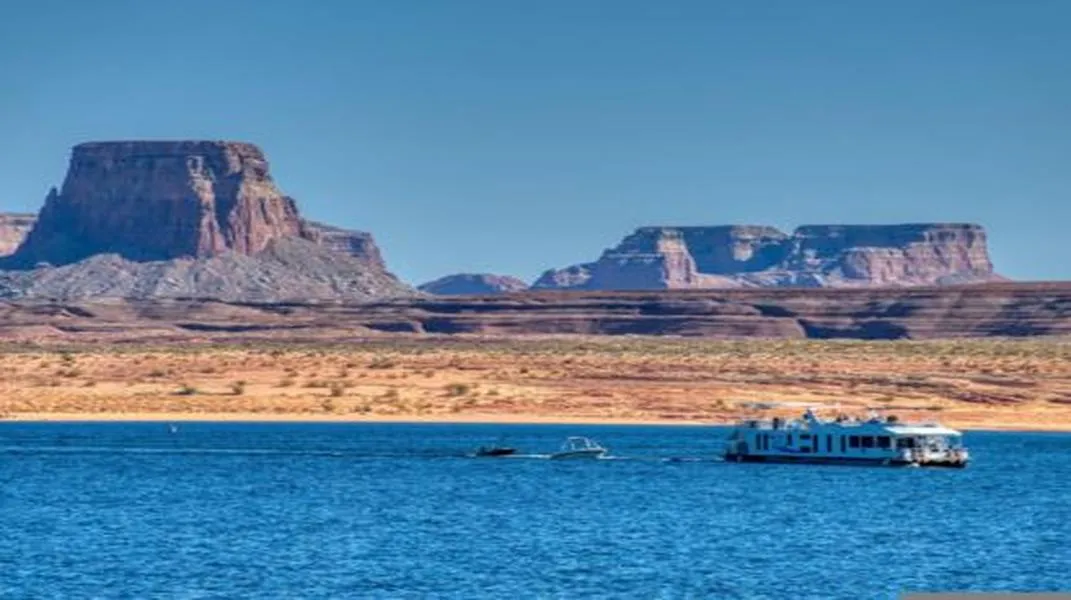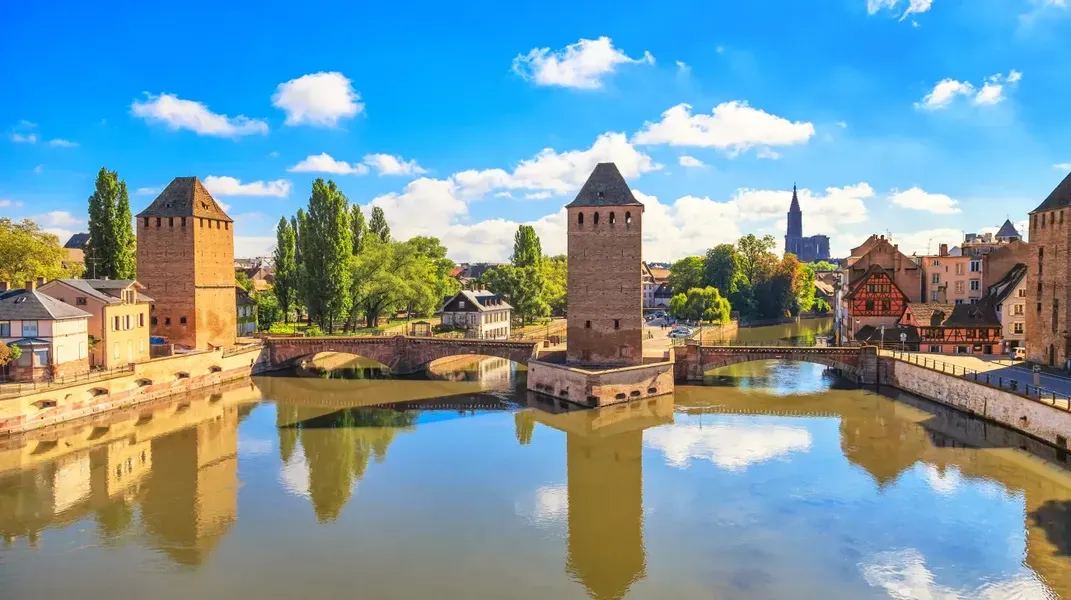Exploring Lake Powell: A Jewel of the American Southwest
Nestled amidst the stunning red rock canyons of the American Southwest, Lake Powell is a breathtaking reservoir that offers visitors a unique blend of adventure, serenity, and natural beauty. Spanning over

A Brief History of Lake Powell
Lake Powell was formed by the construction of the Glen Canyon Dam on the Colorado River in the 1960s. Named after the explorer John Wesley Powell, who famously navigated the Colorado River in the late 1800s, the lake was created primarily for hydroelectric power generation, water storage, and recreation. Today, it serves as an essential resource for the southwestern United States, providing water for millions of residents while also standing as a testament to the striking beauty of the region.
Attractions and Activities at Lake Powell
Lake Powell is well-known for its myriad of recreational opportunities. Whether you're looking to relax on the shore or embark on a thrilling adventure, there is something for everyone at this magnificent reservoir.
1. Boating and Water Sports
One of the most popular activities at Lake Powell is boating. With over 2,000 miles of shoreline, the lake is a paradise for both motorized and non-motorized boaters. Visitors can rent houseboats, kayaks, canoes, and jet skis from various marinas along the lake. Cruising through the serene waters, you can explore hidden coves, secluded beaches, and stunning rock formations. The warm waters of the lake also make it an ideal spot for swimming, paddleboarding, and fishing.
2. Hiking and Exploration
The rugged terrain surrounding Lake Powell offers numerous hiking trails that cater to all skill levels. Some popular hiking spots include:
- Rainbow Bridge National Monument: A short boat ride followed by a scenic hike leads you to one of the largest natural bridges in the world. The stunning geological formation is a must-see and holds significant cultural importance to Native American tribes.
- Antelope Canyon: Located just a short drive from the lake, this famous slot canyon is renowned for its wave-like structure and incredible light beams that filter through the narrow openings. Guided tours are available, providing an in-depth look at the canyon's unique geology and history.
- Hiking in the Grand Staircase-Escalante National Monument: This nearby national monument is home to stunning landscapes, including slot canyons, arches, and vast plateaus. The diverse terrain offers countless hiking opportunities, perfect for those looking to explore the region further.
3. Photography
Lake Powell is a photographer's dream, with its vibrant colors and dramatic landscapes. Early morning and late afternoon provide the best lighting for capturing the lake's beauty. Locations like the Wahweap Overlook and the area around Rainbow Bridge are particularly popular for photography enthusiasts. Whether you're an amateur or a professional, the stunning vistas will leave you in awe.
4. Wildlife Watching
The diverse ecosystem around Lake Powell is home to an array of wildlife, including deer, bighorn sheep, coyotes, and numerous bird species. Birdwatchers will delight in spotting eagles, herons, and other waterfowl near the lake's shoreline. Early mornings are the best time for wildlife observation, as animals are most active during this cooler part of the day.
5. Camping and Stargazing
Camping at Lake Powell allows visitors to immerse themselves in nature and enjoy the beautiful star-filled skies at night. There are several campgrounds located near the lake, many of which offer amenities like restrooms and picnic areas. The remote location away from city lights makes Lake Powell an excellent spot for stargazing, with opportunities to witness the Milky Way and other celestial wonders.
Preparing for Your Visit to Lake Powell
To ensure a smooth and enjoyable trip to Lake Powell, it's essential to prepare adequately. Here’s a detailed guide on what to bring and consider before your visit:
Essential Items to Pack
- Clothing: The weather in the region can vary significantly, so dressing in layers is advisable. Lightweight, moisture-wicking clothing is ideal for daytime activities, while warmer layers may be needed for cooler evenings. Don’t forget a wide-brimmed hat and sunglasses to protect against the sun.
- Footwear: Sturdy hiking boots or shoes are essential for exploring trails and rocky terrain. If you plan on spending time on the water, consider bringing water shoes or sandals.
- Sunscreen and Insect Repellent: The intense sun in the Southwest can lead to sunburn, so it’s crucial to apply sunscreen with a high SPF. Insect repellent can also help keep pesky bugs at bay, especially near the water.
- Water and Snacks: Staying hydrated is critical in the arid climate. Bring plenty of water, especially if you plan on hiking or engaging in strenuous activities. Pack snacks like energy bars, nuts, and dried fruits for quick energy boosts throughout the day.
- Camping Gear: If you plan to camp, ensure you have a tent, sleeping bags, cooking equipment, and other camping essentials. Check for any camping permits or reservations that may be required.
- Boating and Water Equipment: If you plan to rent a boat or bring your own, ensure you have all necessary safety equipment, such as life jackets. If you're kayaking or paddleboarding, don't forget paddles and dry bags for your belongings.
- Camera and Binoculars: Capture the stunning landscapes and unique wildlife by bringing a camera with extra batteries and memory cards. Binoculars can enhance your wildlife viewing experience, allowing you to spot animals from a distance.
- Maps and Navigation Tools: While GPS is often reliable, having a physical map or printed directions can be invaluable in remote areas with limited service. Familiarize yourself with the layout of the lake and surrounding attractions.
Important Considerations
- Permits and Reservations: Depending on the activities you plan to engage in, you may need permits or reservations. Check the official Lake Powell website or contact the visitor center for specific information regarding camping permits, boat rentals, and entry fees.
- Weather Conditions: Before your trip, check the weather forecast for the area. Conditions can change quickly, so be prepared for sudden storms or temperature drops, especially in the spring and fall.
- Safety Precautions: Always inform someone about your plans, especially if you plan to hike or explore remote areas. Cell phone coverage may be spotty, so it’s wise to carry a whistle, a first-aid kit, and a basic emergency supply kit.
- Leave No Trace: Practice responsible outdoor ethics by following the Leave No Trace principles. Respect wildlife, stay on designated trails, and pack out all trash to preserve the natural beauty of the area for future visitors.
Getting to Lake Powell
Lake Powell is accessible by car, with several entry points. The nearest major city is Page, Arizona, which serves as the gateway to the lake. The closest airport is Page Municipal Airport, with limited commercial flights. For those driving, the lake is located approximately 130 miles from Flagstaff, Arizona, and 270 miles from Las Vegas, Nevada.
Conclusion
Lake Powell is more than just a reservoir; it is a breathtaking destination that offers a wealth of experiences for visitors of all ages. From boating and hiking to photography and stargazing, there is something for everyone to enjoy in this stunning landscape. By preparing adequately and respecting the natural environment, you can create unforgettable memories in one of the most beautiful regions of the American Southwest. Whether you’re seeking adventure or relaxation, Lake Powell is sure to leave a lasting impression on your heart and soul. Prepare for your journey to this natural wonder, and immerse yourself in the beauty and adventure that awaits!




